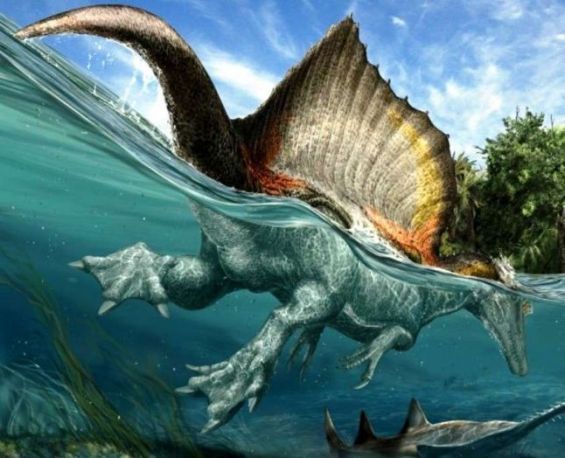After struggling to gain back the «Zarafasaura», an extinct genus of Elasmosauris known from the Oulad Abdoun Basin, Morocco may be about to face the same situation. Reported by Abdelouahed Lagnaoui, a Moroccan paleontologist and iconologist working at the Kanzan Federal University in Russia, one of the rarest dinosaurs, namely «Spinosaurus aegypticus», are being allegedly sold on the Internet by a man named «George Corneille».

On a Facebook post published on «Megalodon Shark Teeth And Fossils», a private group created «to help teach about and share fossil finds». The alleged seller posted three pictures showing the Spinosaurus lower jaw, writing that the fossils belong to his collection and that they were found «south of Taouz, Kem Kem Basin, Morocco».
Outraged at the post, Abdelouahed Lagnaoui reposted Corneille’s publication denouncing the sale. «Only two similar complete lower jaws were found in Egypt and Morocco», Lagnaoui wrote wondering, «who protects the palaeontological heritage of Morocco ?»

The rarest dinosaur
Contacted by Yabiladi, Abdelouahed Lagnaoui stressed that he was very surprised to see that the fossils of one of the rarest dinosaurs are being allegedly sold on the internet. «The man did not write in a explicit way that the fossils are for sale but in the comments section, people were asking him about the price and replied saying that he would give them the price of the fossils by inbox», Lagnaoui explained. What remains astonishing is the fact that these fossils are part of George Corneille’s collection. Lagnaoui argues that :
«The fossils that appear in the photos, unfortunately, have no records because apparently they were stolen from Morocco. But in general the Spinosaurus aegypticus is a very rare dinosaur. It was found only two times in the world. In 1915 the first Spinosaurus was discovered in Egypt that is why the species is called aegypticus. A German scientist found the fossils and brought them to Germany where they stayed in a museum located in Munich. During World War II, the museum was destroyed and the fossils too».
For Lagnaoui, the jaw put for sale must be from Morocco as the other location where the species was found is Kem Kem, an area in Draa Tafilalt in southeastern Morocco. «In 2013/14 a group of scientists headed by Ibrahim Nizar found the fossils of a Spinosaurus in Kem Kem», Laglaoui said insisting that «for the moment Morocco and Egypt are the only locations where these species lived».
Lagnaoui insists that the fossils were found in Morocco as the seller claims, so they certainly belong to the country and should be protected by «the Environmental Protection article» and local laws. The Moroccan palaeontologist declared that «in this situation, it is very hard to get the fossils back because we are not talking about a State-owned institution that the Moroccan government can negotiate with».
Spinosaurus is a really special species due to «its unique adaptations that may have allowed the dinosaur to hunt underwater. Like crocodiles, Spinosaurus had a long narrow snout with nostrils mid-skull, perfect for submerging. It also had a second pair of openings, likely neurovascular slits that are also found in crocodiles», as described in an article published by the Smithsonian, a scientific magazine.





 chargement...
chargement...













